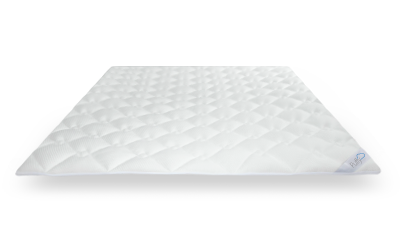A good night's sleep is essential for our overall well-being, and a mattress pad can play a vital role in ensuring that comfort. In this comprehensive guide, we'll explore what a mattress pad is, its uses, which side should face up, and how to keep it from sliding. With this information, you'll be well-equipped to make an informed decision about incorporating a mattress pad into your sleep setup.
What is a Mattress Pad?
A mattress pad is a removable bedding layer designed to enhance the comfort and protection of your mattress. Mattress pads are typically made from materials such as cotton, polyester, memory foam, or latex, and are available in various thicknesses and styles. They provide additional cushioning and support, and often have a waterproof or water-resistant layer to protect your mattress from spills and stains.
What is a Mattress Pad Used For?
There are several reasons to use a mattress pad, including:
- Comfort: A mattress pad can add extra cushioning and support, helping to alleviate pressure points and provide a more comfortable sleep surface.
- Protection: By adding a barrier between your mattress and bedding, a mattress pad can help protect your mattress from stains, spills, and general wear and tear, prolonging its lifespan.
- Temperature Regulation: Some mattress pads are designed with temperature-regulating materials, such as moisture-wicking fabrics or gel-infused foams, to help maintain a comfortable sleep temperature throughout the night.
- Allergen Control: Hypoallergenic mattress pads can help reduce allergens such as dust mites and pet dander, creating a healthier sleep environment for allergy sufferers.
Which Side of the Mattress Pad Goes Up?
When placing a mattress pad on your bed, it's essential to ensure the correct side is facing up. Most mattress pads have a textured or quilted side, which should face up, while the smooth or waterproof side should be in direct contact with the mattress. This orientation provides the intended comfort and protection benefits, as well as ensures proper breathability and airflow.
How to Keep Mattress Pad from Sliding
If you find that your mattress pad tends to slide or shift during the night, consider the following tips to help secure it in place:
- Ensure Proper Fit: Make sure your mattress pad is the correct size for your mattress, as an ill-fitting pad is more likely to move around.
- Use Fitted Sheet Straps: Attach adjustable sheet straps to the corners of your mattress pad and fitted sheet, securing them together and preventing the pad from shifting.
- Opt for a Non-Slip Mattress Pad: Some mattress pads come with a non-slip backing, which helps keep them in place on the mattress.
- Consider a Mattress Encasement: A mattress encasement fully encloses both the mattress and the mattress pad, providing a secure fit and preventing movement.
Conclusion
Understanding what a mattress pad is, its uses, proper placement, and how to keep it from sliding can significantly enhance your sleep experience.
Discover how to take your sleep to the next level. Compare Puffy’s mattresses side-by-side to see all benefits.
By adding a mattress pad to your bedding setup, you can not only protect your mattress investment but also create a more comfortable and healthy sleep environment tailored to your needs.

- Fitted, elasticated design.
- Oeko-Tex® Standard 100 certified.
- Breathable and hypoallergenic.
- Lifetime warranty.
- 101-night sleep trial.
- Free shipping and returns.












